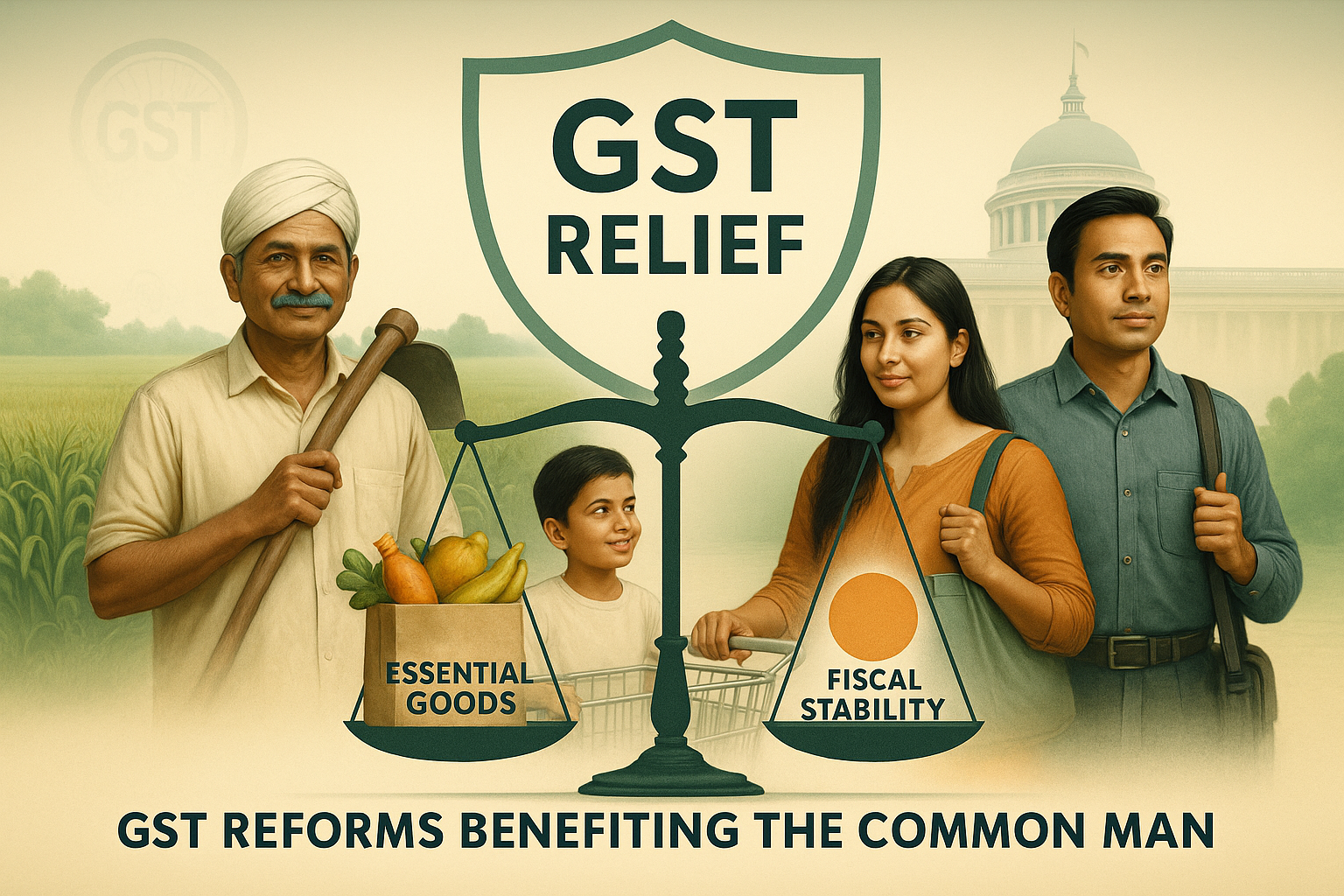Finance Minister Nirmala Sitharaman has assured a group of ministers that the proposed GST rate rationalization will be designed to benefit the common man, farmers, and the middle class. Amid growing expectations of reforms, the FM emphasized that changes would focus on making taxation simpler, more equitable, and less burdensome for essential consumption sectors.
The discussion comes at a critical juncture, with policymakers considering whether to converge GST slabs into a leaner structure. Experts believe that such a reform could not only ease compliance but also strengthen demand across rural and middle-income households, thereby fueling broader economic momentum.
Focus on the Common Man and Farmers
The FM highlighted that essential goods and services critical for everyday households and farmers will remain at the heart of the reform. Rationalization is aimed at reducing tax burdens where they directly impact affordability and livelihoods.
Essential farm inputs, fertilizers, and food items are likely to remain in lower or exempted brackets.
Services like education and healthcare are expected to stay protected.
Relief for the Middle Class
The middle-income segment, which forms the backbone of India’s consumption story, has often been squeezed by indirect tax burdens. The FM’s assurance reflects an attempt to address affordability concerns while also stimulating demand.
Lower GST rates on household consumption goods could free up disposable income.
Housing and retail segments may see targeted relief to support urban middle-class households.
Structural Rejig of GST Slabs
Current GST slabs (5%, 12%, 18%, and 28%) have been under review for their complexity and overlaps. Policymakers are considering a two or three-tier structure for greater simplicity.
A leaner system could reduce litigation and classification disputes.
Businesses and MSMEs would benefit from reduced compliance complexity.
Wider Economic Impact
Beyond direct relief to households, GST reforms are expected to improve investor sentiment and market efficiency. By streamlining taxation, the government aims to balance fiscal needs with long-term growth.
Lower indirect tax burden could boost consumption demand.
Industry stakeholders expect greater compliance and revenue buoyancy.
Why This Matters
The proposed GST reform is not just about tax rates—it represents a shift toward inclusive growth. By protecting essentials while simplifying the system, the government seeks to strengthen both social equity and economic competitiveness.
Household Relief: Reduces costs for farmers, rural households, and middle-class families.
Economic Stimulus: Unlocks higher demand through affordability.
Simplified Taxation: Easier compliance for MSMEs and corporates.
Policy Credibility: Signals government’s responsiveness to people’s needs.
Long-Term Growth: Supports a balanced, consumption-driven economy.












